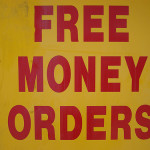If you want to pay for something by mail but you don’t or can’t write a personal check from your checkbook, a money order is a great substitution for a check. A money order is one of the most popular ways to pay for things and is very similar to a check in many ways.
 A money order, like a check, is sent in the place of cash. If you want to send a money order the post office, grocery stores, and convenience stores usually offer a money order service. The money order is paid with cash so any money order can be exchanged for cash.
A money order, like a check, is sent in the place of cash. If you want to send a money order the post office, grocery stores, and convenience stores usually offer a money order service. The money order is paid with cash so any money order can be exchanged for cash.
Money orders don’t have expiration dates so they can be cashed whenever you’d like. Unlike a check you don’t have to worry about the issuer having enough funds in his or her checking account, money from a money order is guaranteed to cash. Money orders are popular among people that don’t have bank accounts. You don’t need a bank account and there’s no age requirement to purchase a money order. Anyone that has money can buy a money order.
Money orders were invented in Great Britain in 1792. In the 1830s the money order system was taken over by the postal service. Then the US caught on to the money order system of sending money through the mail.
Cashier’s checks issued by banks are similar to money orders but are for larger sums of money. They’re used because many stores have a cap on how large a money order they’re allowed to issue usually around $500 or so. Cashier’s checks are used for amounts over that and are guaranteed by the issuing bank. Money orders services typically charge a fee and you should always ask what this fee is before purchasing a money order.
